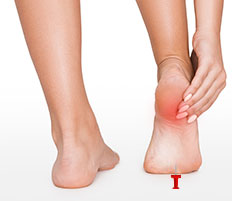Pacific Podiatry
Valerie Valdivieso-Diaz, DPM
Podiatry located in Miami, FL
Twisting an ankle or bending it excessively to one side can be extremely painful, and it’s a problem both children and adults are liable to encounter at least once. If you’ve twisted your ankle, you could have an ankle sprain or strain, or even a fracture, so it’s essential to consult a foot and ankle specialist for an accurate diagnosis. Valerie Valdivieso-Diaz, DPM, of Pacific Podiatry has the knowledge, skills, and facilities to provide outstanding care for ankle injuries. If you think you’ve sprained your ankle, call the Miami clinic today or book an appointment online.
Is my injury due to a sprained ankle or a strain?
When you twist or bend your ankle beyond the limits of its supportive tissues, it can stretch or tear ligaments, tendons, or muscles, and may even cause bone fractures. Ankle sprains are different from strains, although they’re often mentioned together. A strain involves the tendons that attach muscles to bones, whereas a sprain affects the ligaments that attach bones to each other and stabilize joints.
An ankle sprain affects the ligaments that attach your ankle bones together and support your ankle joint. Turning or twisting an ankle stretches these ligaments and may cause micro tears or complete tearing of the fibers.
What are the symptoms of a sprained ankle?
When you have a sprained ankle, it may feel tender to the touch or weak. Other common symptoms of a sprained ankle include:
- Pain, particularly when you try to stand or walk
- Swelling and bruising
- Difficulty circling the ankle
As the symptoms of sprains, strains, and fractures can be similar, it’s essential to get a professional diagnosis so that you can receive the most appropriate treatment.
What’s the best first aid for sprained ankles?
First aid is important at the point when the ankle gets injured, and as soon as you or someone you’re with twists an ankle, you should apply the RICE method to help reduce inflammation and pain.
- Rest: Keep weight off the ankle as much as possible
- Ice: Apply ice packs or a bag of frozen peas wrapped in a towel to cool the inflamed tissues
- Compression: Wrap a pressure bandage around the ankle to support it and reduce swelling
- Elevation: Raise the ankle above the heart, so that blood doesn’t pool in the affected limb
The earlier these self-help techniques are applied, the less severe the effects of the sprain.
What treatments are available for sprained ankles?
When you visit Pacific Podiatry, Dr. Valdivieso-Diaz has a range of treatment options available for your sprained ankle, which you’ll discuss with her at your assessment. Treatment options may include:
- Crutches
- Compression bandages or an ankle brace
- Immobilization aids for severe sprains
- Physical therapy
- Strengthening exercises
- Balancing exercises
If you follow the advice of Dr. Valdivieso-Diaz, your sprained ankle should heal without any complications; however, in a few cases, surgery may be needed to repair or reconstruct a ligament. Severe sprains may increase your risk of incurring the same injury again, so taking care of your ankles and keeping up your exercises is vital.
If you’ve injured your ankle or an old sprain isn’t healing correctly, call Pacific Podiatry today or book an appointment online.
WHAT WE OFFER
SERVICES
Patient Insurance
We are proud to participate with several government and commercial insurance plans. The Pacific Podiatry Center accepts most major insurance plans. We also welcome patients without insurance.
Please call our office at (786) 322-3111 and we will be happy to provide information regarding out-of-pocket costs.









